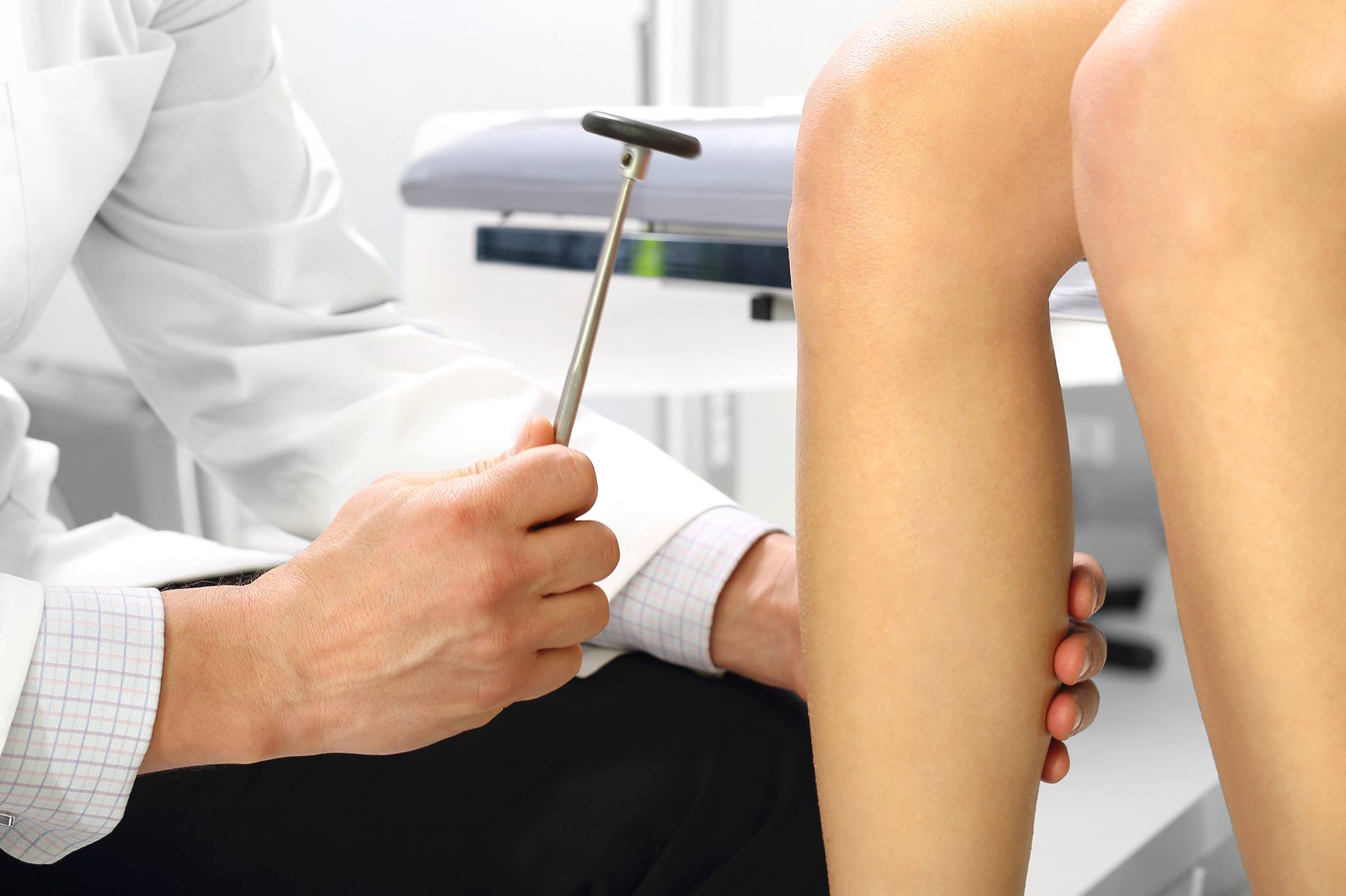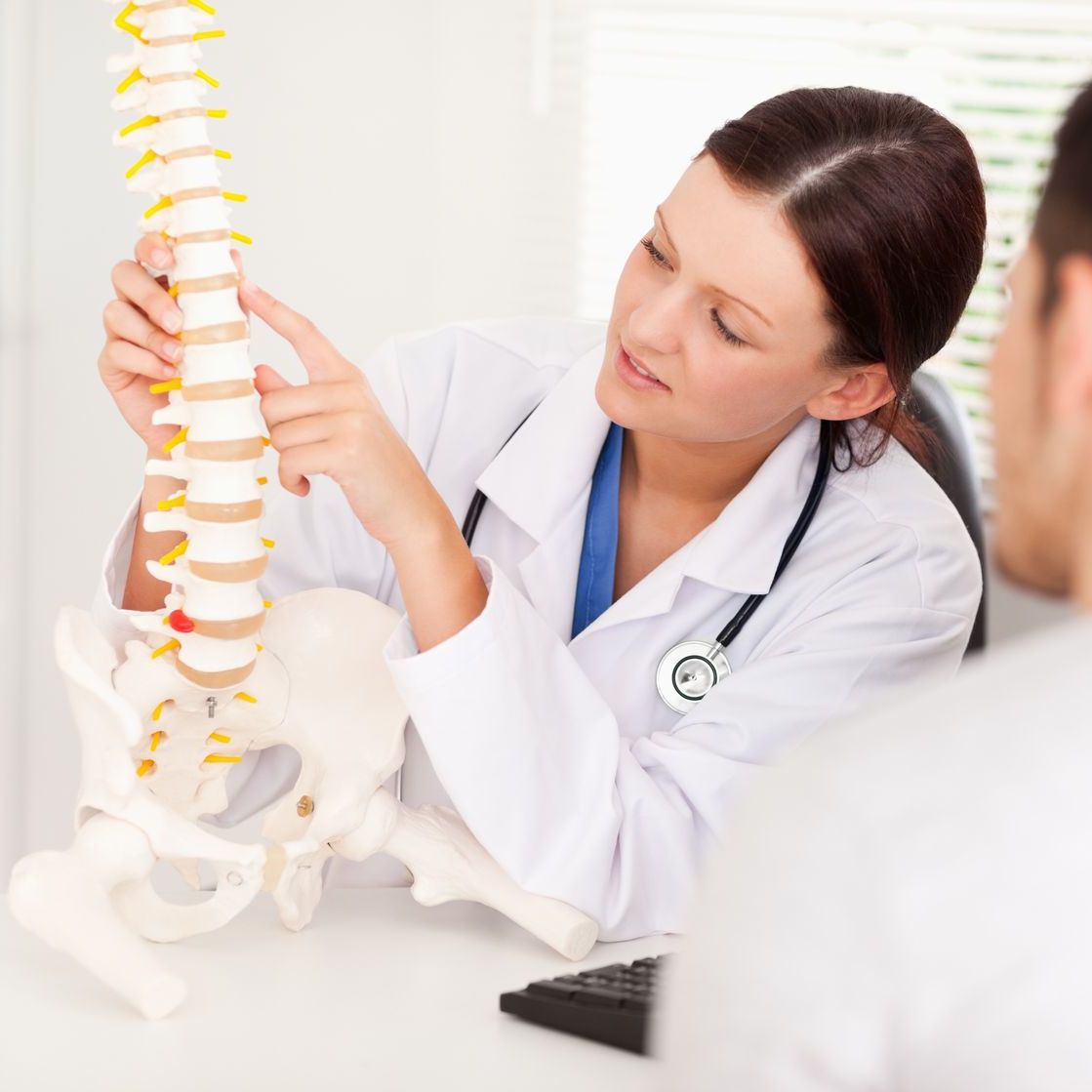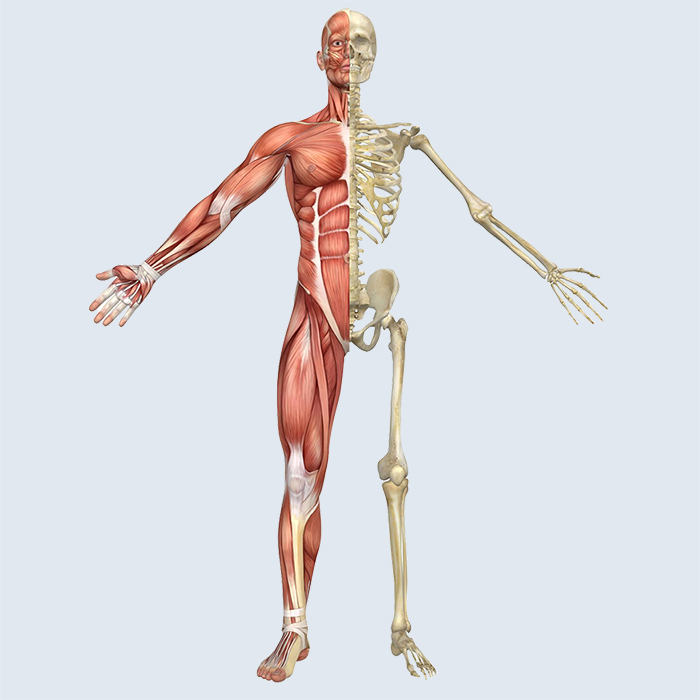Orthopedics
Orthopedics is a discipline that deals with bones, the word is derived from the Greek word orthopaedia.
Orthopedics is a specialized field for the diagnosis and treatment of acquired and congenital disorders of the musculoskeletal system. This field of medicine deals with the restoration, preservation and development of the shape and function of the musculoskeletal system, limbs, spine and accessory organs, for which it uses pharmacological, surgical and physical methods.

When should you seek help from an orthopedist?
It is recommended to visit an orthopedist for musculoskeletal complaints, for example limited movement and persistent pain. You can turn to our orthopedic specialists with the following complaints:
- joint complaints, inflammations
- muscle pain
- diseases of the tendons
- hip problems and their surgical solutions (hip prosthesis surgery)
- diseases of limb bones
What diseases belong to the field of orthopedics?
The orthopedic specialist diagnoses and treats diseases of the active (muscular) and passive (skeletal) musculoskeletal system. At our clinics, we treat the following lesions and disorders as part of private healthcare:
- Acute and chronic knee complaints – patella disorders, meniscus injuries, joint wear, ligament injuries, scarring of the joint capsule etc.
- Congenital disorders of the joints – hip pain or abnormal outgrowths, other dysplasias.
- Acquired joint lesions, joint wear – arthrosis.
- Static disorders, developmental disorders – „goose foot”, scoliosis.
- Upper limb lesions – tennis elbows, golf elbows, tunnel syndrome, tendonitis.
- Shoulder complaints: pain, swelling, limited mobility – rotator cuff lesions, impingement syndrome, frozen shoulder syndrome
- Acute and chronic spinal changes – low back pain, lumbago, disc herniation, neck, back pain.
- Musculoskeletal and neurological diseases – neuromuscular diseases – diseases of the musculoskeletal system, such as those caused by brain damage at birth for example: Little’s disease.
The following is a summary of the most common orthopedic diseases with which our patients visit our Clinics:
- „goose foot”
- cam
- hammer finger
- knee inflammation
- cartilage detachment, cartilage softening
- meniscus injury
- knee ligament injury (inner, outer, front, back ligament)
- degenerative disease of the hip
- acute spine pain in the neck, back and lumbar region
- disc bulge
- disc herniation
- scoliosis
- narrowing of the range of motion of the shoulder
- shoulder arthritis
- tennis elbows
- ganglion
- tunnel syndrome
- tendonitis

The course of the orthopedic examination
At the orthopedic examination, the orthopedist first interviews the patient about previous illnesses, any family history, or whether they have had any surgery before. He then asks about current complaints: the exact location, severity, frequency, duration of pain, and whether it can be linked to any activity or time of day.
This is followed by a physical examination of the mentioned body part. The doctor first examines the affected part of the body for visible changes and then performs functional tests. During the examination, he checks the function of the affected limb (stability, range of motion). Finally, he checks the function of the peripheral nerves to ensure that the sensory and motor reflexes in the mentioned area function properly. A physical examination can be painful to the extent of the injury or deformity. Pain is the leading musculoskeletal complaint, which at the time of examination may only show when it is provoked, but has a significant diagnostic role.
If other medical imaging tests (MR, CT, X-ray or ultrasound) or laboratory tests are necessary to establish an accurate diagnosis, the specialist will recommend this. It is also possible to perform these tests in our hospital.
What treatment options are available at Medicover?
The goal of orthopedic treatments is to regain ability to move and to be painless again.
The treatment options for orthopedic diseases are extremely wide. Therapy may consist of medication, supplemented with medical aids, painkillers, anti-inflammatory or cartilage replacement injections, physiotherapy (physiotherapy, massage) or physiotherapy (electrotherapy, ultrasound).
If necessary, the lesion can be surgically treated. Medicover offers the most common surgeries such as knee replacement implants or arthroscopic knee surgeries.

How are our body parts structured for movement?
The musculoskeletal system is made up of bones and skeletal muscles in the human body. The bones connected to each other by the joints, the joints are moved by the muscles that are able to contract and relax, so the skeleton is the passive part of the musculoskeletal system, while the muscles are its active part.
Bones are hard, solid and at the same time flexible. The number of bones that make up the skeleton gradually decreases from birth. This is because certain bones merge during growth. The skeleton of a newborn consists of 270 bones at birth and then decreases to 206 by merging certain bones after adolescence.
The skeletal muscle system is made up of 350 muscles. The function of skeletal muscles is to bring bones closer together or move them away from each other. However, muscles are also found elsewhere in the body, and their job is to help the organs function. They occur in the senses, (external eye muscles), viscera (pharyngeal and laryngeal muscles), can be separated (diaphragm), and can also form the walls of body cavities (intercostal muscles, abdominal muscles, pelvic floor muscles).
A feature of the muscles that also make up the skeletal muscle system is their ability to contract. This is usually caused by a stimulus that starts in the central nervous system and is transmitted to the muscle through the motor endplate. The muscles are in constant active tension, even if it doesn’t cause anything to contract. This is called muscle tone.
In most cases, a muscle connects two bones between which there is a joint. As the muscles that migrate over the joints function, the position of the joint changes, coming into bending, tensioning, removal, approximation, or rotation.
Based on this, we can divide the muscles into different groups according to their function. We distinguish between flexing, extensores, approximating and removing (ad- and abductores), and rotating (rotator) muscles.
At the two ends of the muscles, we distinguish between points of origin and points of attachment: the immobile end of a muscle is called origin, and the movable end is called adhesion.
